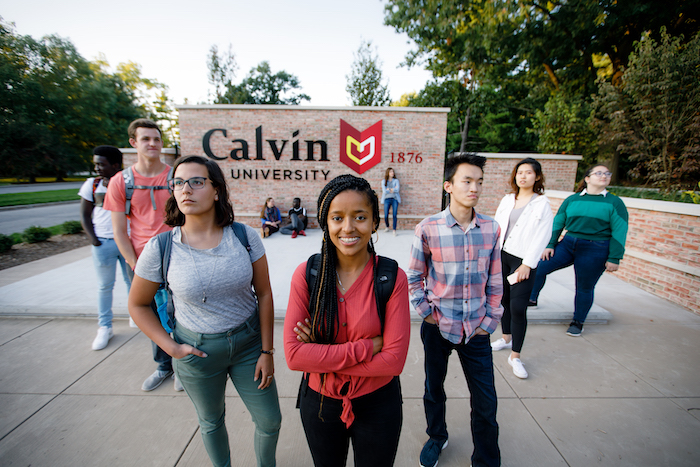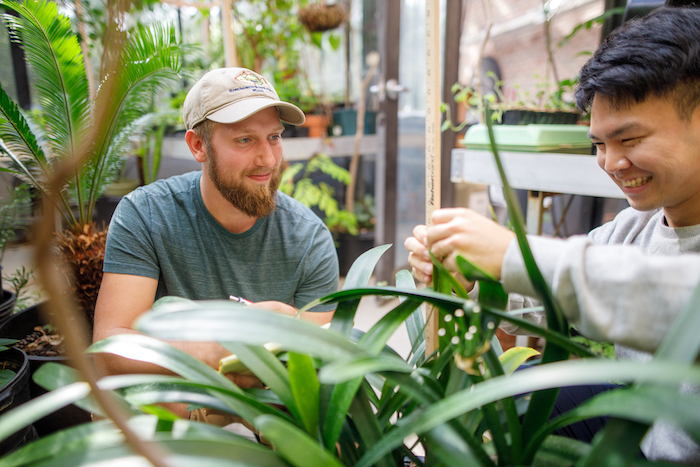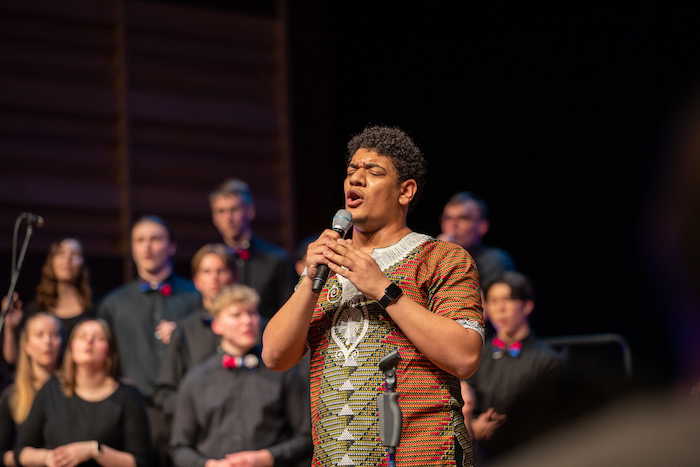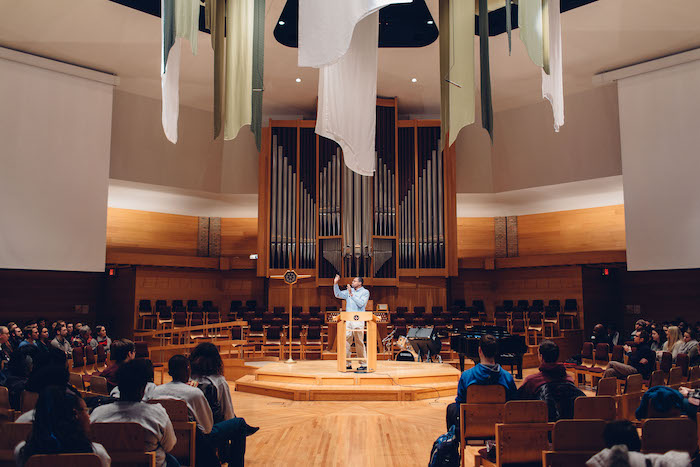Cultural Custodians

Long-Awaited Celebration
In July 2024, after a nearly two-decades-long process, the archaeological site Umm Al-Jimal was added to the United Nations Educational, Scientific and Cultural Orga- nization’s (UNESCO) World Heritage List, numbering it the seventh among such sites in Jordan. It joins the ranks of natural and historic landmarks such as the Aswan High Dam in Egypt, the Grand Canyon in the U.S., and the Taj Mahal in India.
World Heritage Sites receive protection through an international treaty administered by UNESCO. To be considered, sites must be nominated by their home countries, meet special criteria, and go through a lengthy con- sideration and approval process. Their status provides global recognition and impetus for long-term conservation efforts.
Rich History, Modern Town
Local tour guide and lifelong resident of Umm Al-Jimal Samar al Sroor has dedicated her career to sharing the story of this important antiquities site of the Hauran region (an area which includes parts of southern Syria and northern Jordan). Sroor has a special connection to Umm Al-Jimal: it has been part of the fabric of her family’s history for generations. “When we speak about Umm Al-Jimal, we speak about 2,000 years of history,” she says. That history tells a story of religiously diverse peoples influenced by the Roman, Byzantine, and Ottoman empires.
In the more recent past, herders in the region tended their sheep, goats, and camels there during the winter months, taking advantage of its low elevation. In 1972, when detailed scientific exploration was restarted for the first time since the early 1900s, the Jordanian government closed off the site, and residents built a new town on the outskirts.
“When the [older generation] gathers inthe evening, they sit down and start speaking about the days when they lived in the ruins,” says Sroor, who can tell stories about memorable events that took place at specific locations. “This is the personal connection for my family and our whole community.”
Community Partnerships
In November 2024, Sroor traveled to Calvin to celebrate Umm Al-Jimal’s new status as a World Heritage Site. “That moment when we all gathered in the same room to celebrate our achievement was actually very important for the people of Umm Al-Jimal, because most of the time, we were the ones hosting groups here in Jordan, and to be at Calvin has changed our feeling. To have decades of work and our achievement celebrated there is amazing.”
The director of Calvin’s archaeology program and co-director of the Umm Al-Jimal Archaeological Project, Darrell Rohl, says Calvin’s over five-decade relationship with the site began as all good archaeological projects do: “with an interest in the past.” The late Professor Emeritus Bert de Vries ’60 began mapping the site in 1972, and excavation commenced in 1976. It was the beginning of a career-long investment.
Unlike many excavation and preservation projects that receive funding for a limited time, Rohl explains that “Calvin’s scholarship and faith integration approach allowed Bert to stay at Umm Al-Jimal for his whole career and to become a pioneer of what has become the gold standard of archaeology today—doing archaeology for the benefit of the community.”
“From the very beginning, Bert was met with this incredible hospitality,” says Rohl, who emphasizes that de Vries made it a priority from the start to involve the local community in the site’s preservation.
“What drives us is our relationship. It’s for the love of being there that we’ve tried to partner with one another to find a way to conserve this beautiful, important site that represents all this knowledge of the past.”
Sustainable Preservation & The Common Good
Becoming a UNESCO World Heritage Site isn’t just a badge of honor; it’s also a pathway to future economic opportunity and sustainable conservation.
In a country with few natural resources or exports, tourism stands as one of Jordan’s largest economic sectors. Yet Umm Al-Jimal remained a little-known site until recently, with the launch of a new national effort to draw more visitors there.
Rohl reports that the local community faces a high unemployment rate. “We have people with master’s degrees and PhDs who work for low wages as day laborers because that is the only work they can find.”
Sroor believes over time this can improve. The first local woman to serve as a nationally licensed tour guide, she is training more local guides to share the story of Umm Al-Jimal’s remarkable history and people. She also sees opportunities for other hospitality-based businesses to grow.
Although tourism in Jordan suffered during the pandemic and now from conflicts along its borders, Rohl, too, remains hopeful. “Inshallah, soon we will see peace and a return of tourists. We are on the cusp. And the pause creates time for us to put systems in place for proper management of the site.”
Technology Improves Conservation
Currently on sabbatical, Rohl is leading an effort to document Umm Al-Jimal using 3D digital imaging, something that has never been done for an entire archaeological site in Jordan. The images will become part of an online public archive that can be used for academic research and conservation efforts.
“Ground-based 3D scanning creates comprehensive documentation of the site as it exists right now; it’s the most fine-tuned documentation of the site ever created,” Rohl explains.
With more accurate imaging, archaeologists can correct old drawings, discover new inscriptions among the ruins, and keep a cur- rent record of how the site changes to “identify compromised structures or other conservation threats” and to address them “before they become tragedies.”
Researchers can also “create more accurate models of how Umm Al-Jimal might have looked in the past.
“This kind of work has almost always only been done in places like Stonehenge or Pompeii. It’s a cutting-edge way to document an archaeological site to aid promotion, research, and site management—all of which contribute to conservation and continue to create opportunities and benefits for the community.”
Connecting Past and Present
Rohl says many archaeological projects at Christian universities integrate faith and learning by focusing on “marshaling archaeological evidence to prove the Bible’s veracity.” Though that approach has merit, the goal at Umm Al-Jimal has always been different. He describes the relationship between de Vries’ legacy, Calvin, and the local community of Umm Al-Jimal as “covenantal.”
“How can we use archaeology as a means of seeking human flourishing?” Rohl asks. “How can we as visiting archaeologists in a local community do our work in a way that benefits the community rather than exploits them? That’s a real integration of faith. A working out of being an agent of renewal.






